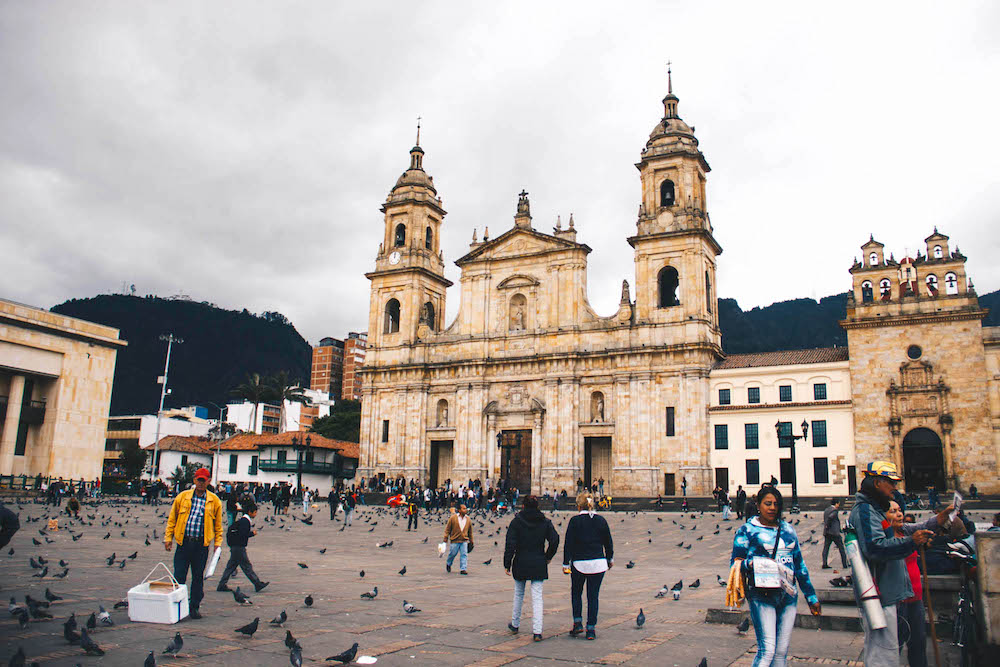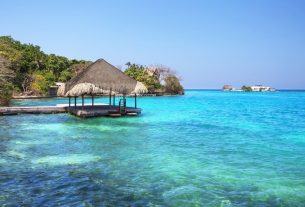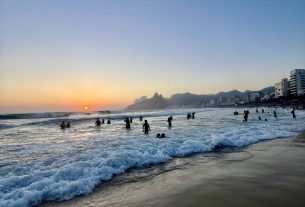One of the largest metropolises in Latin America, the Colombian capital offers an ideal mix of history, gastronomy, music, art and the typical joy of the inhabitants there that makes it very easy to choose what to do in Bogotá: it has an attraction for everyone.
A former gateway to the continent since colonization, the city has always been a meeting place for people from various parts of South America, in which cultural life flourished.
In recent years, Colombia has once again established itself as a popular tourist destination and receives more and more Brazilians, who have in Bogota the main gateway to break through the wonders of the country.
We no longer have to worry about violence more than in any other Latin American destination. Anyone who still has that image of Colombia in the 1990s may be surprised to find a capital full of life to give.
See now a list of what to do in Bogota and a four-day itinerary suggestion in the city.
Also read: 4 museums in Bogotá worth visiting
The Quevedo Chorro Square is the landmark of the city
How many days to stay in Bogotá to enjoy the tourist attractions
Bogota is a huge city with a wealth of culture, history and tourist attractions to offer. To really appreciate what Bogota has to offer, I would say you need at least 3 to 5 days. This will give you enough time to explore some of the best sights, museums and neighborhoods of the city without much haste.
Best time to visit Bogota
Bogota is known for its year-round spring climate, thanks to its equatorial location and high altitude. This means that you can visit it at any time of the year and expect quite mild temperatures, hanging from the cold, with thermometers usually ranging between 10 and 20 degrees Celsius.
However, if you want to take the best weather and avoid the rainy season, it is best to plan your trip during the drier months, which are usually from December to March and from July to August. During these periods, you can expect less rain and clear skies, which is perfect for exploring the city on foot and enjoying the amazing views of Mount Monserrate.
What to do in Bogota: 2, 3 and 4 days itinerary in the capital of Colombia
To start, take a look at this list with the main tourist attractions of Bogota:
- Climb the Cerro Monserrate and see the city from above
- Stroll through the streets of the historic Candelária neighborhood
- Visit the Gold Museum of Bogota
- Drink a chocolate with cheese and bread in one of the traditional bakeries in the city
- Enjoy the Nightlife in the T Zone
- Learn about the history of Colombia at the National Museum
- He turns to the Cathedral of Sal
- Have fun in a game of Tagus, the national sport of Colombia
- Buy handicrafts at local fairs
A good idea to get to know the city is to do a free walking tour. In this type of tour, you walk through Bogotá in the company of a guide and only pay a tip at the end of the route. You can reserve your place (free) through this link.
Now that you know more or less what to expect, I have shared the attractions in 2, 3 and 4 day itineraries in Bogota, for you to pick up, use or adapt according to your preferences.
Shall we go there?
What to do in Bogota in 2 days
Day 1 – Gold Museum, Candelary Quarter Tour and Bottero Museum
As our body needs some time to get used to the altitude of Bogota, take the morning of the first day to make a quiet visit to the Museu del Oro de Bogotá (Parque de Santander, carrera 5a with calle 16), in the center of the city, one of the most interesting in the Colombian capital.
Take a few hours to be inside, since the collection that gathers gold articles from various cultures that have inhabited Colombia for centuries is huge. Among the pieces is the “Balsa de Muisca”, the representation of an indigenous ritual that probably began the legend of El Dorado. The ticket costs 4,000 COP (R $5), on Sundays is free.
On the museum side is the neighborhood of Candelária, one of the coolest neighborhoods in the city. It was there that the city was founded and its narrow cobblestone streets and colorful houses still preserve the historical air of the colonial period.
Today, the neighborhood concentrates most of the cultural life of the city and aggregates more than 500 artistic institutions, in addition to the main museums and some universities. This makes Candelária, as well as a charming place, a cool and vibrant place full of cafes, hostels and bars where Bogotan students gather.
Find a place to have lunch there as you wander around the region and discover the beautiful graffiti that make it even more colorful. If you prefer, take a free walking tour to get to know the most emblematic graffiti in the city. You can book your place for free here.
Be sure to pass by the Iglesia de la Candelaria, one of the most important buildings in the neighborhood, and the Plaza Chorro de Quevedo, the place where Bogota was born, today a little house full of restaurants and nightlife.
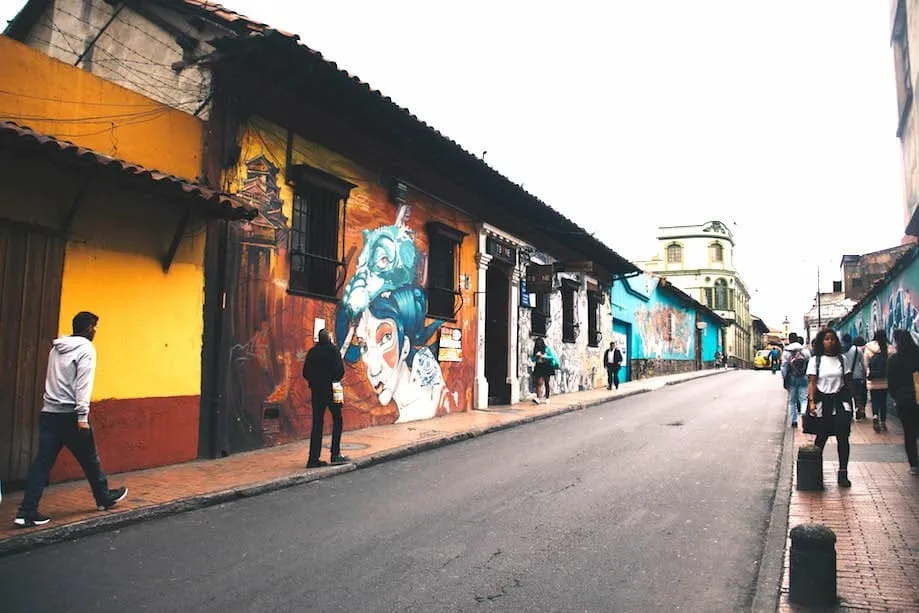
The colonial houses of the Candelária neighborhood are now taken by street art
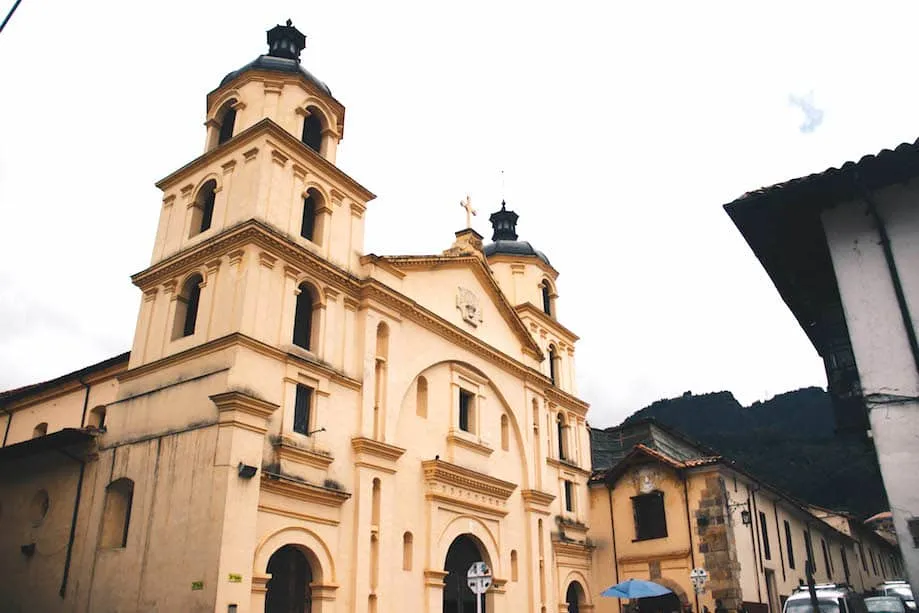
Things to do in Bogotá: Candelária Church
Down the Candelary region is Plaza Bolívar, a social and political center in Bogotá, around which are some important buildings: the Palace of Justice, the Liévano Palace, the National Capitol and the Cathedral of Bogota.
This is where Colombians gather for political demonstrations. If you have time and interest, another important museum in this region is the Botero Museum (Calle 11, no 4-4, free entrance), which brings together works by the famous Colombian artist.
In the late afternoon, walk to Cafeteria La Florida (Cra. 7 x 21-46), one of the most traditional in the city, and end the day drinking chocolate with cheese and bread, a snack of the typical afternoon of bogotanos. Don’t forget that the cheese goes inside the chocolate.
Day 2 – Cerro Montserrate, National Museum of Colombia and the nightlife of Zona Rosa
Start the morning of the second day by climbing the Cerro Montserrate, the highest in Bogota and also one of the main tourist attractions of the city.
Located 3,200 meters above sea level, the hill is also an important Catholic pilgrimage point, since at the top is the Basilica Santuario del Se?or Caído de Monserrate. There is also a lookout, a small fair of crafts and a beautiful park.
The entrance to the hill is free, but the funicular that takes to the top costs 27,000 COP round trip, which is equivalent to R $ 32. A good idea is to do a free walking tour with guide to learn more about the history of the hill. You can book your place for free here.
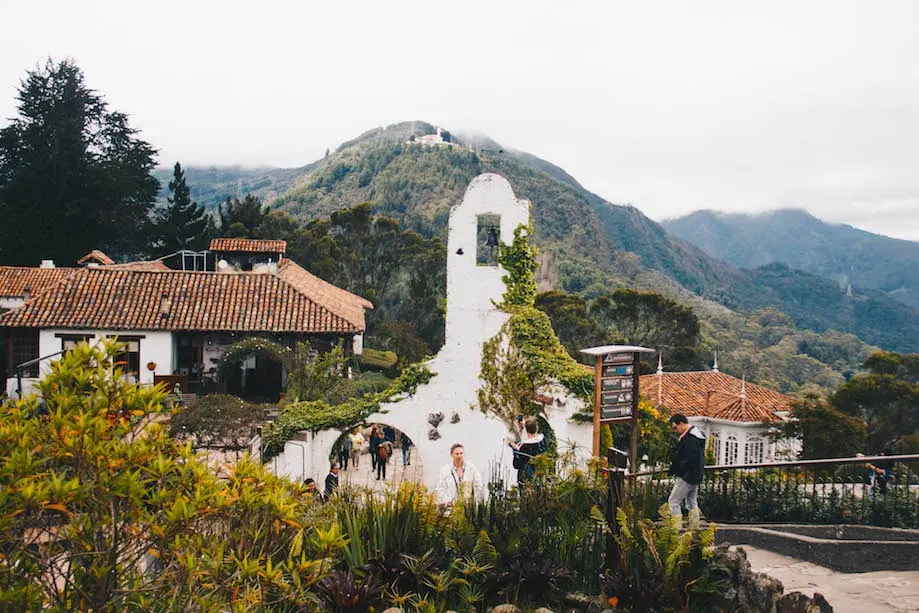
You can make the route to the top on foot, but residents of Bogota recommended me to take the funicular during the week, since there are chances of assault along the way. On weekends and holidays, when the trails are fuller, this is again an option.
But do not invent to make the journey on foot if you have just arrived in Colombia: altitude can charge its price and make the climb a martyrdom. By way of doubt, bring a canck of coca in the pocket and, if you feel the need there are shed tea of the plant above. I felt no side effects of altitude, but I subri in the funicular.
Whatever you choose, carry a coat with you. Although the day is hot in Bogota (which is not so common), the weather changes a lot the entire time and the altitude of Cerro makes the thermometer lower a few degrees. The nearest metro station to the entrance to the center is Universities, but you can also take a taxi or Uber. It is best to do this tour on a clear day, to enjoy the view.
On the way back, take a taxi or walk to the National Museum of Colombia (Carrera 7, no 28-66, La Merced – 4,000 COP), the oldest in the country, which has about 20,000 objects and 17 exhibition rooms. The exhibitions weave the history of the country from the first human groupings, through the great pre-Columbian civilizations, colonization, independence and republic.
At night, the request is to go to dinner in the Gastronomic Zone of the city, which is around the National Museum, in calle 30, between the carreras 5 and 7. There are several restaurants that serve typical foods of Colombia and South America.
If there is still energy, go see some of the nightlife in Zona T (in Calle 82, between the Carreras 12 and 13), a region within the Zona Rosa with closed pedestrian traffic that concentrates the most famous bars in the city.
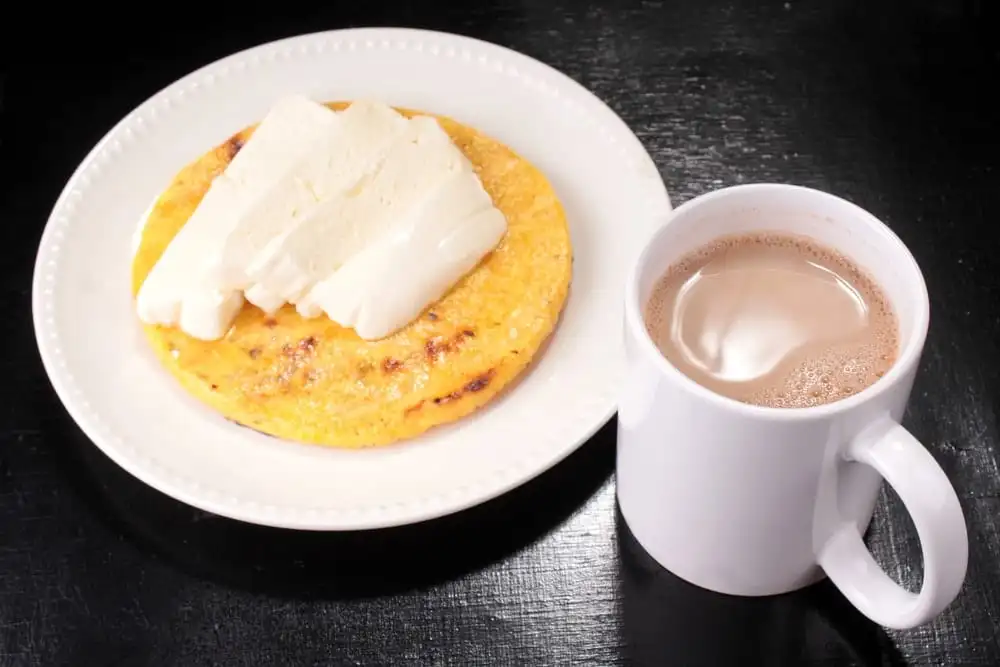
Chocolate with cheese and bread is a typical afternoon snack from Bogota. Photo by Shutterstock
Things to do in Bogota in 3 days
Follow the two-day itinerary and add the suggestion below or the suggestion of the 4-day itinerary, as you prefer.
Day 3 – Cathedral of Salt
Day of making a bang-back to the municipality Zipaquirá to see the Cathedral of Sal, a church built through excavations in a salt mine that mimics a temple built in the past by workers who extract the mineral there.
As this type of excavation did not obey security standards, this new church was built obeying the style employed by miners and became considered one of the main tourist attractions of the country.
To get there the simplest alternative is to rent a car, but you can also get there by public bus, taking the Zipaquira line (or just Zipa) on the intermunicipal bus platform of the Portal Norte (the line B74 leaves you there, leaving the center).
Ask the driver to leave you at Sal Cathedral. You will have to walk 20 minutes to the ticket office.
A more comfortable way is by hiring an agency to make the journey. She will pick you up in Bogota and take you to the Cathedral, with Guide included. You can book your place on such a tour through this link.
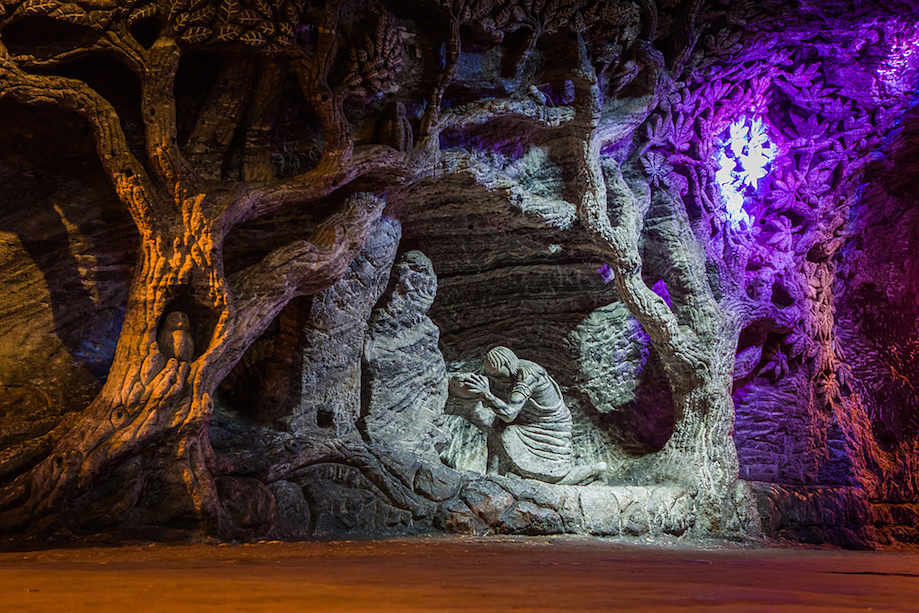
The Cathedral of Salt. Photo by Foto: Foto593
To learn more about this visit, see this post from Ideas in the Malay.
Things to do in Bogota in 4 days
Follow the three-day itinerary and add the below suggestion.
Day 4 – Usaquén, Tagus, Bike Tour
If you are in Bogotá on a Sunday, a good idea is to visit the fair of Usaquén, which in addition to local crafts also offers several options of typical Colombian food, all among the charming colonial style streets.
Also on Sunday, several other fairs spread through the different neighborhoods of the city. But if you, like me, are not lucky to be in the city during the weekend, there is more to do in Bogota on that day: a good option is to go out by bike and walk the bikers scattered around the city. For this, you can hire a bike tour.
Here is a super cool, but that sells out quickly, so it is good to book in advance.
You can also rent your bici and create your own route.
In the late afternoon, go to the Tagus Club de la 76 (carrera 24, no. 76-56) to have a little fun with the explosive national sport of Colombia.
Read also: Tagus, the explosive national sport of Colombia
Where to stay in Bogotá: hotels and best regions to stay
Did you like our suggestions for what to do in Bogota? To better enjoy your stay, you also need to find a well-located accommodation, since the city is large and, like several other metropolises of the mainland, suffers from traffic jams and the absence of a very efficient public transport system.
The main form of travel is Transmillennial, a bus that circulates through free corridors, but that can still grab (and crowd a lot) in peak hours.
For its central location and charm, Candelária is a good option close to the main tourist attractions and with hotels and hostels for all budgets and tastes.
If you prefer to stay close to the Barries and restaurants, you can search for hotels in the Chapinero region, especially in the sub-region of Zona Rona. To find out more about the best neighborhoods, read our guide to Where to Stay in Bogota.
Here are several recommended hotels to stay in Bogotá:
Find Hotels in Bogota
Where to eat in Bogota: restaurant tips
- Andrés Carne de Res: This is perhaps one of the most iconic restaurants in Colombia. Originally located in Chía, on the outskirts of Bogota, and now with a branch in the Zona T neighborhood in the city, this place is a lively combination of restaurant, bar and nightclub. The specialty, as the name implies, is meat, but the menu is vast and varied. Prepare for a night full of energy, color and taste!
- Leo Cocina y Cava: Led by renowned chef Leonor Espinosa, this restaurant offers a true Colombian gastronomic experience. The menu is a celebration of regional flavors and indigenous ingredients. It’s a bit more expensive, but it’s worth every penny for a special dinner.
- La Puerta Falsa: Open for over 200 years, this restaurant is a true historical treasure. It is the perfect place to try traditional Colombian dishes such as tamales and hot chocolate with cheese.
- El Ciervo y El Oso : This modern Colombian-Japanese fusion restaurant in the neighborhood of La Macarena is known for its innovative culinary creations. If you are a lover of sushi and are looking for a new twist, this is the place for you.
- Mini-mal : This restaurant in Bogotá prides itself on using local and seasonal ingredients in its dishes. The menu varies according to the season, but you will always find creative dishes that honor the Colombian culinary traditions with a modern twist.
Travel Insurance to Colombia
There is no obligation of travel insurance to enter Colombia. However, it is highly recommended that you have travel insurance to cover eventualities such as illness, accidents or health problems.
Even if you’re just taking a short trip, medical costs abroad can be high and travel insurance can ensure you have access to quality medical care when you need it.
In addition, good travel insurance also includes coverage for problems such as flight cancellations or loss of luggage.
Do not risk your trip without travel insurance. Get yours now through this link or the offers below.
Click here to make your quote and use the 360MERIDIANOS05 coupon to get up to 25% discount on travel insurance!
How to get around Bogota
Bogota is a big city and, as in any metropolis, traffic can be a challenge. But don’t worry, there are several ways to travel around the city, whether you’re an economic traveler or someone who values comfort above all else.
- TransMilenium: This is the rapid transit bus system of Bogota. It is one of the most efficient and economical ways to get around the city. The routes are extensive and cover much of the city. Just be prepared for crowds during peak hours!
- Taxis: Taxis are quite plentiful in Bogota and although a little more expensive than TransMilenio, they are still an affordable option to get around. Remember, it is best to call a taxi through an app or request one at a hotel or restaurant to ensure it is safe.
- Car-sharing apps: Services like Uber and Cabify operate in Bogota, and are a convenient option, especially if you’re not familiar with the city.
- Bicycles: Bogota is famous for its bike lanes, so if you like to exercise while exploring, cycling can be a great option! You can rent bikes for hours or for days, and the city has great infrastructure for cyclists.
- CaminhadaWalk: Finally, don’t underestimate the power of a good walk, especially in the more touristic neighborhoods like La Candelaria. It’s a great way to get to know the city, just remember that Bogota is huge, so you’ll probably want to combine hiking with other transportation methods.
Subscribe to our newsletter

Sign up for our newsletter and stay up to date with exclusive news
that can transform your routine!
Warning: Undefined array key "title" in /home/storelat/public_html/wp-content/plugins/link-whisper-premium/templates/frontend/related-posts.php on line 12
Warning: Undefined array key "title_tag" in /home/storelat/public_html/wp-content/plugins/link-whisper-premium/templates/frontend/related-posts.php on line 13

